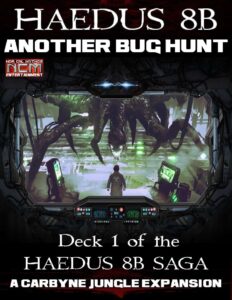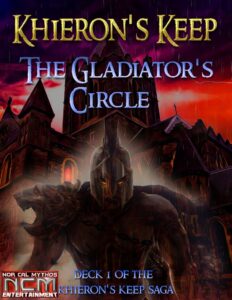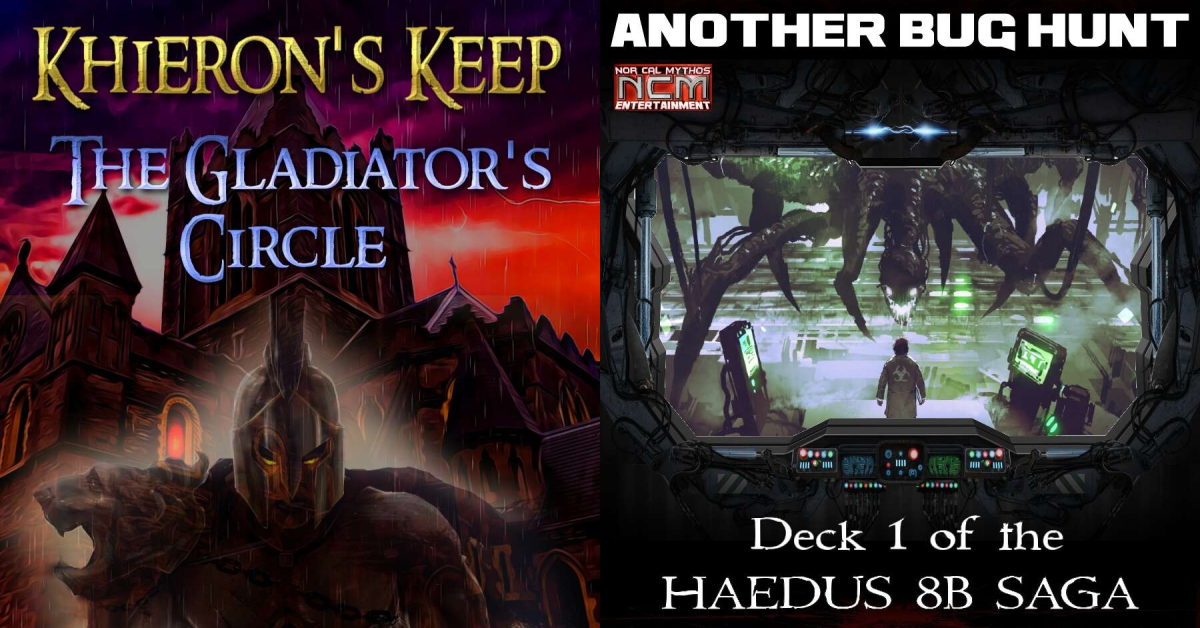Roll4 Review: NCM Mission Decks
Need a break from being a forever DM, or just really don’t have anything planned? Maybe you want to play a solo game, or with a small group that doesn’t want to have a dedicated DM. Even just something unique for a one-shot. Enter GM-less Mission Decks from Nor Cal Mythos.
What are Mission Decks?
Mission Decks are a mix and match way to create an adventure based on the cards that you draw. They provide a way to procedurally generate an adventure based on different cards. From the rooms you enter, the traps you encounter, to enemies that you have to take down: everything is left to chance.
What a GM would normally do to set up a session is instead handled by the mission deck. To keep all of the cards always relevant, mission decks are laid out in a very traditional dungeon crawl style. You progress from one room to the next, each with their own challenge. If you succeed on the challenge, you are able to advance to the next room, otherwise you have to backtrack to find another door. You continue to advance until you find and defeat the boss.
The Cards
The NCM mission decks come with a few different kinds of cards:
- Map cards show the room that the characters can enter, building the layout of the dungeon
- Conflict cards or Encounter Cards are what makes those rooms interesting. They call for a challenge that the players must overcome to advance to the next room
- Target cards or Monster Cards are creature cards. Sometimes Conflict cards will call for a fight, when that happens, you’ll draw creature cards. From here, the card names are pretty self-explanatory.
- Trap cards are for traps. These will be called for from Conflict cards.
- Loot cards show that sweet loot you can find.
- NPC cards have NPC’s that may help the party.
- Boss cards are for that big bad at the end of the dungeon.
Flow of a Mission Deck
Each time that you enter a new room, there is a simple procedure you will follow:
- Room Entry – You will draw the top Conflict card, and read the “Room Entry” section on it. This is the requirements to get from the room you are currently in to advancing to the next room. This could be a puzzle, require you to draw a Trap card, or just let you through. Depending on how you respond, your decisions may give you advantages or disadvantages in the next room. Once you enter the next room, the Conflict card is reshuffled back into the deck.
- Map Placement – A Map card is then drawn and placed on the current map.
- Conflict – Another Conflict card is then drawn. This will lead to a fight, a trap, a puzzle, or an NPC encounter.
- Outcome – If the party succeeds on the Conflict card, then they may choose one of the other doors to advance to the next room. Failure forces the party to retreat to the previous room, barricading the door and praying that whatever’s on the other side can’t come through.
This process repeats until certain criteria are met, leading you to the boss fight. Once you get to that big bad at the end, you’re in for all the marbles.
Methods of Play
Mission decks are a very versatile tool for any Game Master. The standard method of play involves letting the Game Master run the decks as normal for a group of adventurer’s. These decks are perfect for impromptu one shots, as well as side missions for a party. However, there are more ways to use the decks.
If you just need something to fill out the adventure you’re working on, you can use the untyped conflicts section of the conflict cards to come up with an off-the-cuff situation in any game. If your players take a path that you didn’t intend (the best moments in any RPG), untyped conflicts are the perfect way to keep the game moving.
For completionists, there is also a full clear mode, going through most of the decks. It will be a 48 room conflict before reaching the final boss.
If you don’t have a GM, this is where the Mission Deck’s really shine. For a party, you will be able to advance through the rooms, with each player taking control of a room as the party enters. When you go to the next room, the next player takes the reigns. This also makes it possible for solo play.
The Mission Decks
Structurally, both of the mission decks are fairly similar. The difference between them is the system that they are for. Each deck comes with the PDF to print out your own cards, as well as a digital copy of the ruleset. This will give you expanded instructions on how to run mission decks, as well as the different mission hooks and rewards.
Each book is around 40 pages, and in full color. True to form for NorCal Mythos, the writing is delightful to read. It has a healthy dose of humor, asides and wit, one of the things I liked most about reading their own TTRPG Carbyne Jungle. The layout of the book is logical with meaningful headings making quick reference a breeze. Both products come with the amount of art you would expect from an adventure sourcebook around this length. Not including the amount of art on the cards.
Another Bug Hunt Mission Deck

Another Bug Hunt is a mission deck tailored for Carbyne Jungle, the RPG created by NorCal Mythos. It uses the Tri-Forge engine, and is all around one of the most unique system I’ve ever read. If you’ve haven’t already, check out our full review of Carbyne Jungle.
Another Bug Hunt comes with 3 separate missions with increasing levels of difficulty. Each of these missions has their own hook and rewards upon completion. The first mission gives off a bit of a Starship Troopers vibe and transforms into corporate warfare as the missions continue. Either way, you’re definitely mercenaries in this adventure.
This Adventure is part of the Hadeus 8B Mission Deck collection, there are currently 3 available through Drive-Thru RPG, including Another Bug Hunt, Interdimensional Prison Break, and Unnatural Selection. Each of these decks comes with 3 missions. Each of these decks are $9.99 for the digital copy, and $19.99 for the physical deck and PDF rulebook.
Gladiator’s Circle Mission Deck

Gladiator’s Circle, however, is for Dungeons and Dragons 5e. Much like Another Bug Hunt, it comes with 3 separate missions, hooks and rewards on completion. The missions of Gladiator’s Circle resonate with me a bit more than Another bug hunt. There’s a compulsion for the adventurers to return, with rising tension and stakes.
Gladiator’s Circle is part of the Khieron’s Keep collection, with 3 decks currently available through DTRPG: The Gladiator’s Circle, The Warlords Rise, and The Jester. Each of these decks are $9.99 for the digital copy, and $19.99 for the physical deck and PDF rulebook. However, if you want to try before you buy, NorCal Mythos also release a Khieron’s Keep sample pack, free of charge.
Our Thoughts
Honestly, I love these Mission Decks. For the unplanned session to a one-shot, I can see the usefulness of a sandbox adventure that doesn’t require prior reading or prep. The most exciting thing for me, specifically, is the fact that I can finally try a solo adventure. For $10, the digital versions of the mission decks are a great deal with hours of game play and inspiration for your adventures.

